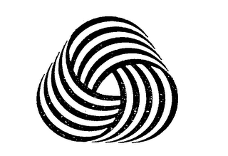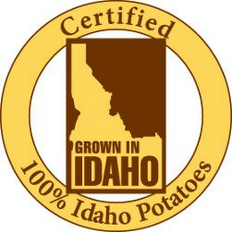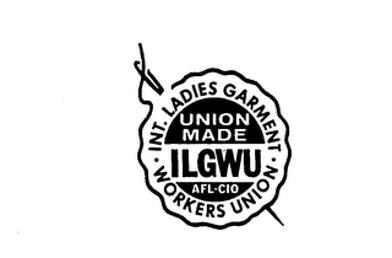“Like the trademark owner, it’s up to the owner of the certification mark to police and control use of the mark. The certification mark owner may have the harder task since it is required to police third-party compliance with standards.
Learn to play the saxophone/ I play just what I feel/ Drink SCOTCH WHISKEY all night long… – Deacon Blues, Copyright 1977 – Walter Becker and Donald Fagan
 If Steely Dan had recorded Deacon Blues now instead of in 1977, these lyrics may have caused some problems for them.
If Steely Dan had recorded Deacon Blues now instead of in 1977, these lyrics may have caused some problems for them.
First, there is no e in the whisky that comes from Scotland or, from Japan and Canada. The e in whiskey is saved for whiskey from the U.S. and from Ireland. That much being said, different regions have different standards and laws to regulate whiskey or whisky production and to assure that the standards and quality of alcoholic beverages coming from Scotland, Canada, Japan, Ireland, etc. are protected.
Scotch Whisky is the most exported food / beverage product in the United Kingdom. Scotch whisky, distilled primarily from barley, tends to be aged longer than other regional whiskies, thus, giving it a deeper, richer flavor. Scotch whisky is produced in five major regions – Cambelltown, the Highlands, the Lowlands, Speyside and Islay – and the whiskies from each of these areas have their own distinct style and characteristics.
Whisky without an e is from Scotland. Sorry Steely Dan, you made a mistake. Hopefully, that Scotch Whisky in the song was distilled in accordance with above rules.
So, how does the consuming public know that the expensive bottle of Scotch they’ve purchased at a liquor store or the drink they’ve ordered at a restaurant is from the Lowlands, or Speyside or Cambelltown? How does the Scotch Whisky Association (the “SWA”) protect against distillers not from the Highlands or Islay calling their products Scotch Whisky?
On June 21, 2022, SWA was granted Certification Mark registration for SCOTCH WHISKY with the United States Patent and Trademark Office (USPTO) for Whisky produced in Scotland according to specific standards, namely:
The certification mark, as used or intended to be used by persons authorized by the certifier, certifies or is intended to certify that the goods/services provided originate in Scotland and have met the Standards as set forth in The Scotch Whisky Regulations 2009 and the Scotch Whisky technical file.
Understanding Certification Marks
While SCOTCH WHISKY indicates that the alcoholic beverage is a whisky from Scotland that conforms to the standards of the Scotch Whisky Association, this certification mark does not identify the manufacturer, nor is this mark owned by an entity that manufactures SCOTCH WHISKY.
So, what is its purpose?
A Certification Mark is a name, symbol and/or logo used by groups (associations, unions, organizations, trade groups, etc.) to show that the product or service to which it is attached complies with industry or associations standards. A Certification Mark can be used to indicate that a product claiming to be from a region, is in fact from that region (Roquefort Cheese). A Certification Mark can be used to indicate that a product is in fact made with the materials it claims to be (Wool). A Certification Mark can be used to assure that certain standards a product boasts of are true (Energy Efficiency, 100% Recycled). A Certification Mark can be used to help parents decide whether to take their children to a certain motion picture (The Rating System).
The purpose of a Certification Mark is therefore, to certify and not to own or indicate source.
The message a Certification Mark conveys is that the goods or services it is used with have been either examined, inspected or in some way verified by an entity that did not manufacture the goods or perform the services. A Certification Mark appearing on goods or services indicates that the product or services meets industry or association standards set by trade groups, manufacturers, unions, etc.
Examples of characteristics or purposes for Certification Marks include:
- Safety
- Quality
- Morality
- Method of Manufacture
- Accuracy
- Geographic Origin
Companies able to use a certification mark to prove that their products or services are up to industry standards are in a better position than those not able to use a certification mark since a certification mark allows entities to assure consumers that goods or services purchased are industry approved. A consumer purchasing an industry approved product or service can rest a little easier.
Obtaining a Certification Mark
An application for a certification mark with the United States Patent and Trademark Office (“USPTO”) is similar to the process for applying for a trademark or service mark. However, unlike a trademark or service mark application, an application for a certification mark does not require that the goods or services be classified under the Nice Classification System. SCOTCH WHISKY is therefore not registered under Class 33 but instead, under Class A. A certification mark can only be in Class A for goods or Class B for services.
In addition, the application must include
(i) A statement that the particular characteristic, quality, mode of manufacture, material, geographic region and/or the like is or is intended to be certified by the mark:
“The certification mark, as used or intended to be used by persons authorized by the certifier, certifies or is intended to certify that the goods/services provided have . . . “(Trademark Manual of Examining Procedure (“TMEP” §1306.03(a))
In other words, how the mark is used for what it’s for, i.e., organic, from Idaho, inspected in accordance with.
(ii) A statement that the Applicant is not engaged in the production or marketing of the goods or services to which the mark is applied except to advertise or promote recognition of the certification program of the goods or services that meet the certification standards of the applicant. (TMEP §1306.03(c)).
(iii) A copy of the certification standards users of the mark are expected to follow. These can be just that, a listing of the standards, or, instruction manuals, policies, etc. These do not have to be originally written but rather, can be copies of government regulations, trade standards or the like.
(iv) A statement that the applicant has control over use of the mark.
The makes a certification mark quite different than the Trademark applicant’s declaration of use of the mark as used or intended to be used on the particular goods/services covered under the mark.
The trademark applicant claims use or intended use of the mark, while the certification mark applicant claims that they are not using or not intending to use the mark.
Certification Marks and Trademarks
The difference between a trademark and a certification mark is that a trademark identifies the source of the product or service to distinguish it from other products or services in similar or related industries while the certification mark certifies that the products or services conform to standards.
However, like the trademark owner, it’s up to the owner of the certification mark to police and control use of the mark. The certification mark owner may have the harder task since it is required to police third-party compliance with standards. The certification mark owner is best advised to prepare supplementary materials such as guides, instructional materials, and recommendations to users of the mark to assure the mark is properly used. A user of a certification mark who does not play by the rules can be stripped of rights to use the mark.
A Few Caveats
- The owner of a certification mark cannot license the mark. As the certification mark owner must maintain control as to whether users of the mark are in compliance, any relinquishment of control cannot be allowed.
- The owner of the certification mark can only use the mark for certification purposes. Any other use dilutes the meaning of and reason for a certification mark.
- The owner of the certification mark must enter into agreements with users for maintaining standards and quality of the goods/services.
- The owner of the certification mark cannot sell any product on its own bearing the mark. THIS DOES NOT MEAN THAT THE SAME ENTITY WHICH OWNS A CERTIFICATON MARK IS PRECLUDED FROM REGISTERING A DIFFERENT TRADEMARK FOR A PRODUCT IT MANUFACTURES OR A SERVICE IT PERFORMS.
For example:

is a certification mark in the name of Woolmark Americas, Inc. dba The Woolmark Company for products made wholly or predominantly of wool, intended for ultimate consumers.
The mark certifies the nature and quality of material, quality of workmanship and other characteristics of the goods.
(This mark registered in 1965 and is in its third renewal period)
Woolmark Americas, Ind. dba Woolmark Company also owns a trademark registration for WOOLMARK for pure wool clothing and other apparel.
Some Well Known Examples

in the name of the United States Department of Agriculture Department of the United States Government.
The mark is intended to be used by persons authorized by the certifier, is intended to certify that a product, when the mark is affixed, is a raw, fresh product or processed product that contains organic agricultural ingredients produced and processed in accordance with the National Organic Program.

in the name of the Wi-Fi Alliance.
The certification mark, as intended to be used, will certify that good manufactured by authorized persons comply with acceptability standards for computer hardware and peripherals, namely, wireless local area networking products.

in the name of the Idaho Potato Commission
The certification mark, as used by authorized persons, certifies the regional origin of potatoes grown in the state of Idaho and certifies that those potatoes conform to grade, size, weight, color, shape, cleanliness, variety, internal defect, maturity, and residue level standards promulgated by the certifier.

(Now expired) in the name of the International Ladies’ Garment Workers’ Union.
The mark certified that the work or labor on ladies’ and children’s garments was performed by members of the Applicant.
(For those of us old enough to remember the motto – Look for the Union Label)

in the name of the Motion Picture Association, Inc.
The certification mark, as used by persons authorized by certifier, certifies in the opinion of the certifier’s Advertising Administration that the motion picture trailer may contain strong content and is appropriate only for mature audiences.

A certification mark owned by the Environmental Protection Agency for use on products that “meet the highest standards for energy efficiency as defined by the U.S. Environmental Protection Agency.
Takeaway
So, what do SCOTCH WHISKY, The INTERNATIONAL LADIES’ GARMENT WORKERS’ UNION and a RATED R motion picture trailer have in common? They are all the subject of Certification Marks registered to assure the consuming public that the goods/services covered under the marks comply with industry standards.
When counseling a client that is a trade association, a union, or a governmental agency, if applicable, advice as to the benefits of certification mark registration is important and useful.
Moreover, as for clients engaged in manufacturing businesses, these clients will benefit from advice that they should always seek to attain the standards set out by their trade organizations and thus, be able to use a certification mark.
Image Source: Deposit Photos
Image ID:54446955
Copyright:gresey

![[IPWatchdog Logo]](https://ipwatchdog.com/wp-content/themes/IPWatchdog%20-%202023/assets/images/temp/logo-small@2x.png)

![[Advertisement]](https://ipwatchdog.com/wp-content/uploads/2024/04/UnitedLex-May-2-2024-sidebar-700x500-1.jpg)
![[Advertisement]](https://ipwatchdog.com/wp-content/uploads/2024/04/Artificial-Intelligence-2024-REPLAY-sidebar-700x500-corrected.jpg)
![[Advertisement]](https://ipwatchdog.com/wp-content/uploads/2024/04/Patent-Litigation-Masters-2024-sidebar-700x500-1.jpg)

![[Advertisement]](https://ipwatchdog.com/wp-content/uploads/2021/12/WEBINAR-336-x-280-px.png)
![[Advertisement]](https://ipwatchdog.com/wp-content/uploads/2021/12/2021-Patent-Practice-on-Demand-recorded-Feb-2021-336-x-280.jpg)
![[Advertisement]](https://ipwatchdog.com/wp-content/uploads/2021/12/Ad-4-The-Invent-Patent-System™.png)






Join the Discussion
No comments yet.